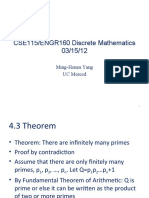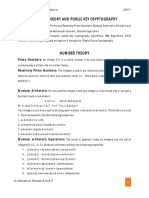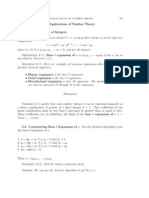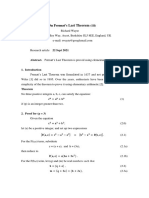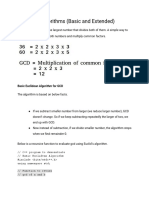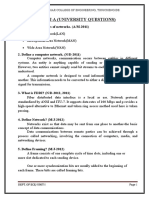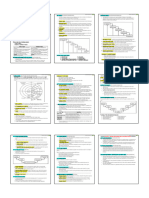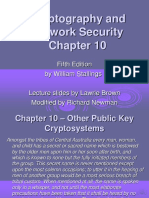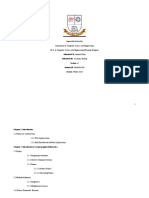0% found this document useful (0 votes)
127 views47 pagesAdvanced Algorithms Unit 4 PP
1. This document discusses advanced algorithms for number theory, including elementary number theory concepts like divisibility, prime and composite numbers, greatest common divisors, and the Euclidean algorithm.
2. It also covers modular arithmetic, defining groups, finite groups, subgroups, and Galois fields. Modular arithmetic uses the integers modulo a prime number to form a field where multiplication has unique inverses.
3. Worked examples are provided to find greatest common divisors, extended Euclidean algorithm outputs, and multiplicative inverses in Galois fields.
Uploaded by
KamalCopyright
© © All Rights Reserved
We take content rights seriously. If you suspect this is your content, claim it here.
Available Formats
Download as PPTX, PDF, TXT or read online on Scribd
0% found this document useful (0 votes)
127 views47 pagesAdvanced Algorithms Unit 4 PP
1. This document discusses advanced algorithms for number theory, including elementary number theory concepts like divisibility, prime and composite numbers, greatest common divisors, and the Euclidean algorithm.
2. It also covers modular arithmetic, defining groups, finite groups, subgroups, and Galois fields. Modular arithmetic uses the integers modulo a prime number to form a field where multiplication has unique inverses.
3. Worked examples are provided to find greatest common divisors, extended Euclidean algorithm outputs, and multiplicative inverses in Galois fields.
Uploaded by
KamalCopyright
© © All Rights Reserved
We take content rights seriously. If you suspect this is your content, claim it here.
Available Formats
Download as PPTX, PDF, TXT or read online on Scribd
/ 47



